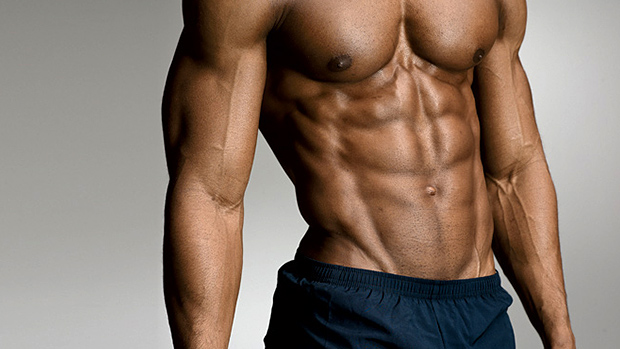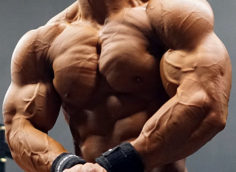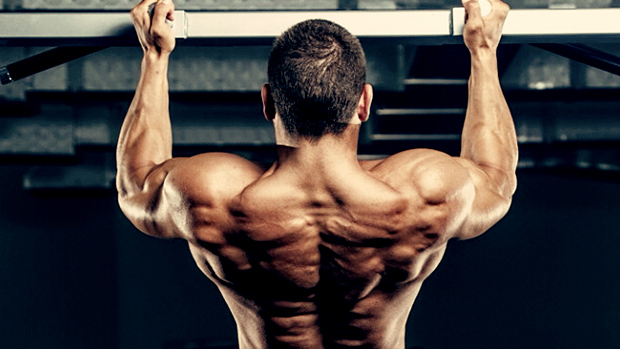Here's what you need to know...
- Despite what many coaches say, you don't get much core work from squats and deadlifts.
- The better you get at stabilizing the spine, the better you'll be at moving your limbs faster and more forcefully.
- Any athlete that needs strength or speed will benefit from having a more stable spine.
- Core stabilization falls into three categories: anti-extension, anti-rotation, and anti-lateral-flexion.
"Core training" has a bad rap. Some say it's unnecessary to dedicate any time to training your core muscles because they get plenty of work from things like squats and deadlifts.
But research shows that squats and deadlifts aren't all that effective for strengthening the muscles in the front and side of your core: the rectus abdominus, transverse abdominus, and obliques.
Squats and deads are excellent for training the posterior core, like the erector spinae and quadratus lumborum (lower back muscles). But saying they're all you need is like saying bicep curls are all you need for upper body strength.
You should be targeting your core muscles, all of them, with one or two exercises per training session. Here's why and how.
Having a stable spine is essential for injury prevention. Spinal stability is also important when it comes to physical endeavors such as playing sports or lifting weights.
Stuart McGill has said that when it comes to the body, "proximal stiffness enhances distal athleticism." When your core musculature is strong all-around and properly bracing your spine, it'll allow your limbs to move more rapidly and forcefully.
Any athlete that values speed or strength (including powerlifting) can benefit from spine stabilization training -- core training -- since a more stable spine allows for more powerful movements of the extremities.

Nothing feels more tedious than holding a plank position or banging out endless amounts of crunches. And it ultimately doesn't matter how long you can hold a plank if your form goes to shit the second you try to move an arm or leg.
This is why traditional planks have recently taken a backseat to things like push-up variations, ball rollouts, dynamic TRX exercises, and several others where your arms or legs are moving at the same time.
The added benefit of doing exercises that challenge your core strength while your limbs are moving is that you can strengthen those limbs simultaneously.
There's no reason not to strengthen the core and the arms at the same time, and if it saves you from having to dedicate 10 minutes to just focusing on abs at the end of your workout, that's a bonus.
These exercises heavily tax your core muscles. Perform them at the end of a session to complement your main lift. For example, if your main lift for the day is bench press, your workout would look something like this. The "D" movement is the core exercise:
| Exercise | Sets | Reps | |
|---|---|---|---|
| A | Bench Press | 5 | 3 |
| B | Lat Pulldown | 4 | 6 |
| C | Close Grip Bench Press | 3 | 10 |
| D | Single Arm Push-Up | 3 | AMAP |
If your main lift is the squat, your day could look like this:
| Exercise | Sets | Reps | |
|---|---|---|---|
| A | Squat | 5 | 3 |
| B | Romanian Deadlift | 4 | 6 |
| C | Hamstring Curl | 3 | 12 |
| D | Suitcase Deadlift | 3 | 15 |
The rep range for these exercises should be relatively high. Anywhere from 15 reps and above is good. These also work as burnout finishers.

Research shows that exercises like crunches that pull the lumbar spine into flexion exert a large amount of force on the spine.
Now, I've yet to see anybody throw their back out doing a crunch, so if you just plain like them, doing them every once in a while is probably unlikely to cause an injury.
In fact, crunches are fine for bodybuilders who want to maximize hypertrophy of the rectus abdominus.
Core stabilization exercises fall into 3 main categories:
- Anti-extension
- Anti-rotation
- Anti-lateral-flexion
Some exercises can fit into more than one, such as the 1-arm push-up, which serves both as an anti-extension and an anti-rotational exercise.
1-Arm Push-up

If you're an absolute beast, do these on the floor. However, your form needs to be strict in order to reap the core strengthening benefits of this exercise. This means none of that Rocky Balboa turn-your-whole-body-towards-the-ceiling business.
Focus on keeping your hips and shoulders locked together and parallel to the floor.
Use a bar on a rack or Smith machine. This is a good finisher on chest/push/triceps day. Hit 3 or 4 sets of high reps to failure.
1-Arm Dumbbell Bench Press

Grab a dumbbell and press it while lying on a bench. Just as it is with the 1-arm push-up, the goal should be to lock your hips and shoulders together and prevent your body from twisting on the bench.
Do the first half of the set with your elbow farther away from your body. Then when your core is getting fatigued, switch to a tucked-elbow position to put more emphasis on your tricep.
Landmine Press

These can be performed in a kneeling, lunging, or even-stance position. Focus on keeping your elbow tucked close to your side without allowing your upper body to lean or rotate. Maintain a neutral spine and don't allow your lumbar spine to extend.
During the eccentric portion of the lift, think about pulling your shoulder down and back and "opening up" your chest instead of letting the shoulder roll forward.
Cable 1-Arm Row

I like to do these with the pulley in a higher position because it forces you to lock down your rectus abdominus to avoid spinal flexion.
Keep your front knee slightly in front of your ankle, with your back knee lined up with your rear hip and shoulder. Focus on not letting your shoulder roll forward as you pull down.
Lat Pushdown

This is a bodybuilding staple for building the lats, but it works equally well for strengthening your anterior core. Keep your ribs locked down throughout the entire movement to maximize the time under tension on your abs.
Landmine Press (Again)
This is both an anti-rotation and anti-extension movement. These can be performed in a kneeling, lunging, or even-stance position. Follow the same form recommendations as above.
Sliding Push-up Variations
Cheap furniture sliders are a surprisingly versatile piece of training equipment that can be used on turf or carpeted surface.
If you can't find any, you can use a towel and do them on a hard floor. Doing these as a burnout at the end of a lift is a good way to pump your arms and chest while still building core strength.
Off-Weighted Deadlift & Squat

I realize these look crazy, but hear me out. Under-loading one side of the bar on squats and deadlifts is one of the best ways to build lateral core strength.
Not only that, it's a great way to determine if you have a side-to-side strength imbalance that's limiting your progress on the squat or deadlift.
If you're naturally stronger on one side than the other, you'll instinctively favor the weaker side during bilateral movements. This can, over time and with heavier weights, lead to a breakdown in form or an injury.
Maintaining a neutral spine and upright posture during these movements is very difficult, but it will strengthen your lateral core muscles and can help clean up mechanical flaws in the squat and deadlift as well.
A good rule of thumb is to take the amount of weight you have on the bar and then subtract about 10-20% of that weight from one side. For example, start with 225 on the bar and then just replace one of the 45s with a 25, or just remove a 45.
Suitcase Deadlift/Carry

Loading one side of your body will force the lateral core muscles to work extra hard to stabilize the spine.
To do the suitcase deadlift, pick a dumbbell up off the ground with a neutral spine and then set it back down.
To do the suitcase carry, hold the dumbbell off to your side without letting your arm touch your body and slowly walk for a predetermined distance while maintaining an upright posture, not allowing yourself to lean.
1-Arm Overhead Press

These can be done with dumbbells or kettlebells. The toughest variation would be the bottoms-up kettlebell press since it'll heavily tax your rotator cuff and grip. But a dumbbell will allow you to emphasize your core, which will allow for the use of a heavier weight.
Stand with your feet slightly wider than shoulder width and focus on standing in a completely upright posture just like on the suitcase lift/carry. To make this exercise harder on your core, narrow your stance.
In order to maximize your results with core training, figure out which kind will actually benefit you and then focus on that. Here's a basic template to get you started.
- Overhead Sports: baseball, softball, volleyball, lacrosse, swimming
- Goal: anti-rotation, anti-extension
Overhead athletes are the ones most in need of anti-extension core strength. This means things like push-up variations.
Anti-rotation strength is also very important, so single-arm exercises like the dumbbell bench press and landmine exercises will also be very useful.
- Bodybuilding
- Goal: anti-extension, anti-lateral flexion
Focus on exercises that target the rectus abdominus. Anti-lateral flexion exercises like suitcase carries will also help develop your obliques. Definitely include exercises that involve concentric contractions like crunch variations.
- Powerlifting, Strongman
- Goal: anti-flexion, anti-lateral flexion
Strongman competitions feature lots of carrying events and anti-lateral flexion exercises will help you keep your upright posture during these events.
Powerlifting mostly taxes your posterior core musculature, but anti-extension exercises will improve your ability to brace during squats, deadlifts, and bench presses.
- Running Sports: track, soccer
- Goal: anti-rotation, anti-extension
Keeping the spine stable while running is extremely important for athletes in sports that involve lots of running. Torso stiffness greatly influences limb movement velocity, so the stiffer you can keep your core, the faster you'll be able to run.
When jogging it's not extremely important to maintain stiffness since your goal isn't to move as fast as possible, but the ability to stiffen up when you want to turn on the burners can make a big difference.





